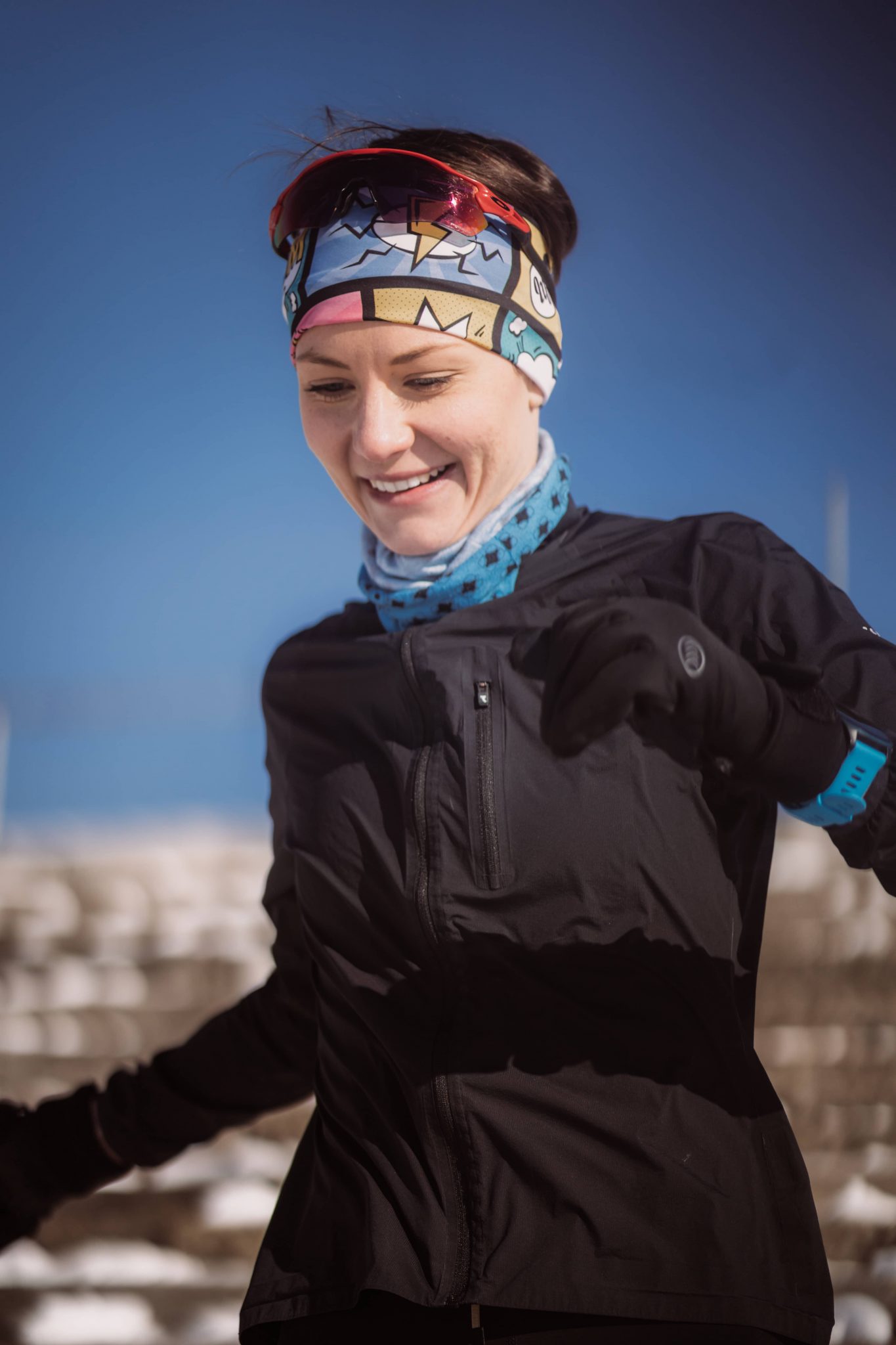KickAss Squad
Winter training for cyclists and triathletes
Fia • 15. December 2021 • 2 Min.
Thanks to Zwift, Netfilix and Co., indoor training on the roller or treadmill has become much more pleasant than it was a few years ago. Still, I’m a big fan of training outdoors – even in winter.
For all beginners who are now facing their first winter as a triathlete, or for those who want to get back to cycling more in nature than in Watopia, I’ve put together a few tips.
Let’s start with cycling.
After the off-season, I first winterize my road bike, which looks like this:
- I put on new tires with a decent profile, e.g. Schwalbe Marathon. This makes you a tad slower on the road than usual, but these tires provide decent grip on wet roads. In addition, they are hardly susceptible to punctures, even if the bike paths are covered with grit because of slippery conditions.
- Front and rear I mount a light each for better visibility on dark days. I also turn these on during a daytime bike ride.
- In addition, I mount mudguards front and rear. This keeps the butt and feet dry. The mudguards can be mounted quickly with a rubber strap and they can also be removed quickly when the roads are dry.

The right cycling gear for winter training:
- “Winter cycling is not a beauty contest” my friend said to me the other day when I wasn’t sure if I should really put that neon yellow vest over my stylish black cycling outfit. But he’s probably right. Visibility is the be-all and end-all on cloudy training days.
- Next point: the right overshoes. There are super warm and water repellent overshoes to buy from many manufacturers, but these are usually also expensive. At KickAss partner Castelli you can save 20% as a KickAss Squad Member. If you don’t know yet if winter cycling is really for you, you can try the following trick:I always pull a few Velotoze (latex overshoes, which are also often worn for aerodynamic reasons in time trials and cost only about 15.00 EUR) under my cheap overshoes, which keep warm, but are unfortunately not completely waterproof. So the feet stay dry even in rain or snow.
- A real game changer for me was also a thermal water bottle. I fill this before my training session with a hot iso tea. Simply boil water and stir in, for example, the Slow Carb powder from Ministry of Nutrition. The drink stays warm in the bottle for about 2-3 hours.
- Since you drink less in the cold, it is highly advisable to take a bar with you, so that a sufficient supply of carbohydrates is ensured.
The advantages for outdoor training are obvious
Cycling comes from cycling. You have to steer, brake, pedal and so on. Especially in winter on slippery roads, you can intuitively hone your riding technique, which will certainly pay off in competitions.
Training in the fresh air also strengthens the immune system, which can’t hurt in the current climate.
In my opinion, there is less to consider when running. However, when it snowed heavily last week, I was once again totally happy about my trail running shoes. With them, it runs very safe even in snow and ice.
In this sense, have fun biking and running!

